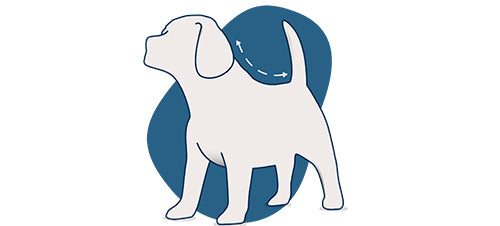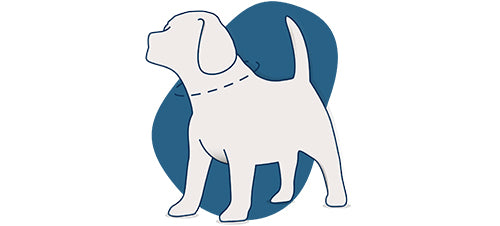Everyone is on a bit of a health kick at the moment. This may be exercise, eating better foods, or more often than not, both. It’s all to do with a much bigger shift in thinking that considers wellness, the mind and soul, physical health and a return to more natural ways. This health kick also parallels the renewed focus on sustainability and looking after our planet.
This is more noticeable in what we eat than anywhere else. We’re no longer looking at just calories and carbs alone; we scan the manufacturing process and the materials used too. It’s a green conscience that more people are conscious about. And, it’s now prevalent in what we feed our dogs.
Now, we’re not suggesting your dog goes vegan, as meat is one of the top ingredients for your dog. But as dog owners it’s important we understand the impact their food has on our planet. If you didn’t already know, 25% of the impact of global meat production comes from pet food - a big carbon paw-print.
So, what do we do about it? It’s easy to assume that more sustainable and nutritious choices are always pricier, but this isn’t necessarily the case. There are now plenty of pet products out there, tailored for the sustainable pet parent. Of course, this isn’t for everyone - so no pressure. For those, however, who want to switch things up and adopt more sustainable and healthy diets for their pooch, here are some things you need to know.
Where Does It Come From?
If you’re looking for more sustainable, healthier ways to feed your dog, then a good place to start is finding out where that food has come from. A large chunk of commercial dog food is produced unsustainably. It’s estimated that around 49 million hectares of land - roughly twice the size of the UK - is allocated to produce food for cats and dogs.
This is before we even take into account how these products are shipped and flown all over the world. These types of products that rely on industrial rates of agriculture are often far less nutritious than ethically sourced alternatives. It’s very similar to food predicaments we face ourselves: fast service, fatty foods, use fast and unsustainable practices.
To avoid this, it’s always a good idea to find out what’s gone into the food. Is the chicken free-range? Where in the world has it been sourced? What types of grain does it use and are these farmed on an industrial scale? Sure, it’s a lot to think about, but when you ask these questions, you ensure that the food in your hand meets animal welfare standards, and you can assess its environmental impact. There are plenty of dog products out there that use ethically sourced meats, and things like sustainably caught fish. If it ticks these boxes, it’s more often than not, healthy food for dogs.
Packaging

As well as what’s inside, it’s always a good idea to check what your dog’s food comes in. Wherever you look, across all industries, brands are changing their packaging. We’re made increasingly aware of the risks attached to single-use plastics, and the impact these have on our planet. Plastic is found in the stomach of 90% of the world’s sea birds, and by 2050, they expect the amount of plastic to exceed the number of fish in our oceans.
It’s also one of the most energy intensive materials to make - and incinerate. Between now and 2050, experts predict that production and incineration could lead to 56 billion tonnes of carbon. But, where does dog food come into this?
The issue is: most dog food packaging is single-use. In other words, you bin it when you’re done with it. A large number of dog owners like to buy food in bulk, which is why plastic is the preferred strong and sturdy choice.
There are, however, a growing number of plastic alternatives that mimic the strength of plastic. Naturally-sourced, recycled or up-cycled materials are all great substitutes, and they’re now more available than ever.
Better Ingredients, Better Planet

It’s no coincidence: healthier foods are better for our planet. This is for both what we and our dogs eat. Sustainably sourced ingredients ensure animal welfare standards are upheld and agriculture does not exceed excessive and reckless levels. Because these types of product adopt this eco-conscious stance, it’s likely the nutritional value in their food mirrors a similar pattern.
These types of brands regulate pesticides and cheap additives that are used to enhance our dog’s food. Essentially, if a brand says they’re sustainable, it’s highly likely that their food will be healthy. We do, however, recommend checking before you buy.
Sustainability is a bit of buzzword right now, so there are unsustainable brands leveraging this as a marketing opportunity. Double check your dog’s food, just like you would with your own.
There are plenty of ways to be more sustainable when looking after your dog - there’s more to it than food alone. Other pet products, like food accessories, toys and even poop bags are now changing for the better. To find out more, take a look at Beco’s 5-step green guide for dog owners.









































































































